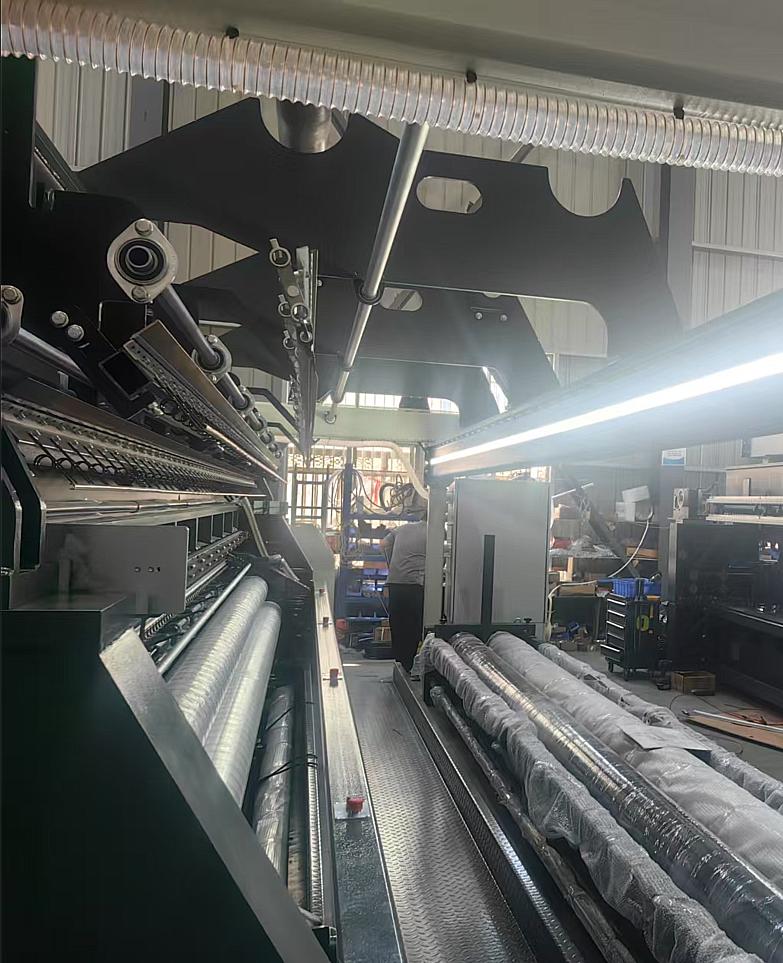Tricot vs. Weft Knitting Machines: Key Differences
Tricot Vs. Weft Knitting Machines shape how your fabric feels, behaves, and sells. One favors stability and clean surfaces. The other brings stretch, drape, and quick style turns. Both promise speed and quality, yet they win in very different ways on the factory floor. Choose right, and margins hold steady through peak season. We’ve tested both across lingerie, athleisure, and technical liners. The patterns are clear, but a few myths keep costing teams time and money. Which machine fits your roadmap – and why? What follows is a grounded view from our factory floor to yours – designed for decision-makers who need results, not jargon.

What Sets Tricot And Weft Apart
At its core, tricot is warp knitting; weft is course-by-course loop formation. Both produce high-value fabrics, yet they solve different problems.
Tricot feeds many ends in parallel, creating columns that lock the structure. The result is stable fabric with a smooth face and low distortion in finishing. This is why you see tricot in linings, swim bases, and footwear laminates. It resists laddering, handles heat-set well, and remains consistent roll to roll.
Weft builds stretch and drape through loop geometry. Jerseys, ribs, and interlocks flex with the body and recover after wear. If your product calendar lives on fast style refreshes and soft hand-feels, weft delivers agility without a tooling bottleneck.
In customer trials, a simple rule of thumb holds: start with the end use, then reverse-engineer the machine. If you need dimensional control and low shrink, explore tricot. If you need comfort stretch and fashion versatility, explore weft. Long-tail searches often reflect this split – think “warp knitting machine for lingerie linings” versus “industrial weft knitting machine for sportswear.” Both are valid routes; they just point to different operating realities.
• Fabric Behavior In Real Products
Tricot shines when stability pays the bills. Edges are tidy, bias growth is controlled, and fabric faces look clean under bright store lighting. For laminations or coatings, the uniform surface helps downstream processes behave. Our tricot platforms use precise guide motion and gentle yarn paths to protect filaments and reduce micro-snags, so your inspection lights stay quiet.
Weft wins when comfort sells the garment. Minor tweaks in stitch length or take-down shift weight, air permeability, and recovery. That tunability lets brands react to trend windows without retooling the entire line. Our weft systems keep those moves tight, with controls that help operators land within narrow GSM bands even during rapid changeovers.
Operational Realities On The Factory Floor
Choosing between Tricot Vs. Weft Knitting Machines is also an operations decision. Downtime, staffing, waste, and energy use make or break margins. We design with those pressures in mind.
1) Setup And Changeover
Tricot rewards discipline. A neat creel, steady tension, and planned maintenance produce long, steady runs. Once the line is dialed in, meters flow with few surprises. Mills that run core programs – lingerie bases, shoe linings, uniform fabrics – often prefer this reliability. Longer runs translate into fewer stops, fewer defects, and tighter color control in finishing.
Weft rewards flexibility. Pattern changes are fast. Mixed yarn programs are common. If your buyers push weekly or monthly drops, weft’s speed to sample and bulk is a genuine advantage. The risk is quality drift during frequent swaps. That is why our weft models emphasize intuitive presets, guided thread-ups, and stitched-in safeguards that help teams hit target GSM and width on the first good roll.
2) Quality And Waste Control
Across hundreds of audits, we see the same waste hotspots: unplanned stops, tension swings, and slow fault recovery. On tricot, uniform tension and clean guides slash snag-related downgrades. On weft, stable take-down and repeatable stitch length cut weight variation. Our platforms surface the right dials to the operator – no deep menus, no guesswork – so small corrections happen in time, not after QC flags a full pallet.
- Planned Care Pays Off: Routine oiling, lint removal, and yarn path checks reduce stoppages and extend needle life.
- Data, Not Drama: Lightweight dashboards help supervisors spot drift before it becomes waste- especially helpful on night shifts.
- Fewer Touches, Better Yields: Clear threading paths and tool-less access make daily care fast, which keeps uptime high.
3) Training And Service
Skilled technicians are scarce everywhere. We build for real teams, not ideal ones. Interface prompts explain setup in plain language. Maintenance reminders surface by hours run, not by guess. Remote diagnostics let our service staff see what your operators see, so support is quick and specific. Whether you run tricot or weft, the goal is the same: predictable production and fast recovery after stops.

How Grand Star Technology Maximizes ROI
When customers ask how to choose Tricot Vs. Weft Knitting Machines, we anchor the decision to outcomes, not labels. Here is the short framework we use in on-site reviews:
- Fabric Roadmap: Will the next 18 months favor stable, low-shrink constructions or stretchy, fashion-forward knits?
- Changeover Cadence: Are you running month-long programs, or switching every few days?
- Tolerance And Testing: What GSM and width windows will buyers enforce, and how will you measure them on the line?
- Line Integration: How will knitting hand off to dyeing, finishing, and inspection without rework?
- Support Readiness: Do you have the people, spares, and procedures for day-one uptime?
From there, we map a path. Our tricot solutions focus on stability, clean faces, and roll-to-roll repeatability. Our weft solutions prioritize agile patterning, controlled stretch, and quick sampling. In both families, you will find robust frames, yarn-friendly paths, and controls that let operators act before defects multiply.
Selecting For Your Roadmap
If you are moving a core fabric from weft to tricot, we stage a pilot with your yarns, finish route, and spec limits. We validate shrink, hand-feel, and appearance under your lights. If you are expanding weft capacity for seasonal capsules, we blueprint presets for GSM, stitch length, and take-down so new styles hit target fast. Either way, the deliverable is not just a machine – it is a repeatable recipe your team can run on day one.
Results matter. Stable tricot lines reduce scrap, simplify finishing, and win long contracts that value consistency. Flexible weft lines capture trend revenue and keep design teams moving. Many mills run both, using tricot as the backbone and weft as the accelerator. We help you tune each line to its job so capital earns its keep.
Call To Action: Ready to benchmark Tricot Vs. Weft Knitting Machines for your next program? Connect with Grand Star Technology. Ask for a fabric demo, book a 30-minute engineering consult, or schedule a pilot on your yarns. We will help you choose with confidence, implement with speed, and produce with pride.
When you focus on the fabric you sell, the pace you run, and the resources you have, the right path becomes obvious. With a partner that speaks both technologies, you do not have to compromise – your machine should serve your market, not the other way around.

Hey, I’m Vincent!
Solving complex challenges with precision and creativity in the warp knitting industry. Passionate about advancing textile engineering and turning innovative ideas into reality. Shaping the future of warp knitting.

